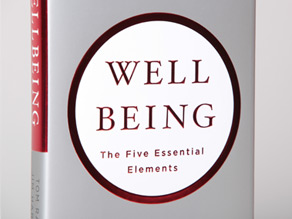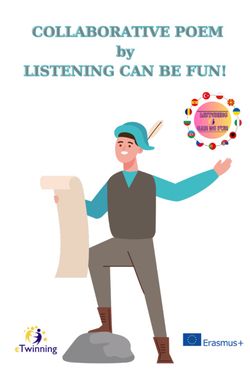
LISTENING CAN BE FUN!
An eTwinning Project
About the project
Due to the devastating earthquake in Türkiye, our project, which was originally scheduled to start last semester, was delayed by one year. We have updated our project timeline accordingly.
This project goes beyond simply teaching grammar and vocabulary. It recognizes that communication requires practice! Here's a breakdown of the project's key features:
- Teamwork: Students worked both individually and in teams, collaborating with peers from different schools. This fostered international connections and communication.
- Interschool Collaboration: Each reading activity involved new teams formed with students from different schools. This broadened perspectives and enriched the learning experience.
- Tech Integration: Web 2.0 tools were utilized for both creating and presenting project work. This equipped students and teachers to leverage technology in their learning and teaching.
- Skill Development: This project wasn't just about listening for comprehension. Students also actively participated in discussions, took notes to capture key points, and potentially created presentations or other materials based on their listening activities. These diverse tasks honed their critical thinking, summarizing, and analysis skills, all of which are essential for effective listening.
- Interactive Content Creation: Students actively collaborated to produce joint projects throughout the program.
Who are we?
20 Partners from 13 Countries
Fadile Efser Neci (Founder) (TOBB Fen Lisesi, Gaziantep, TÜRKİYE)
Małgorzata Neckowicz (Founder) (Zespół Szkół Ekonomicznych w Toruniu, Toruń, POLAND)
Aliya Aghayeva (Sumgayit, Təfəkkür liseyi, Sumgayit, AZERBAIJAN)
Alper Kurt (TOBB Fen Lisesi, Gaziantep, TÜRKİYE)
Antonella Vona (IIS "Pertini" di Alatri, Alatri (Fr), ITALY)
Berrin Bacaksız (Sabahattin Zaim Sosyal Bilimler Lisesi, Gaziantep, TÜRKİYE)
Branimira Nikolova (Secondary school "Hristo Botev", Aytos, Aytos, BULGARIA)
Cvetanka Dimoska (SOEPTU"Kuzman Josifoski Pitu", Prilep, NORTH MACEDONIA)
Ewelina Wojcik (V Liceum Ogólnokształcące im. Jana III Sobieskiego w Białymstoku, POLAND)
Katarina Frajova (Obchodní akademie Česká Lípa, Česká Lípa, CZECH REPUBLIC)
Magdalena Kijek (Zespół Szkół im. Leokadii Bergerowej w Płocku, Płock, POLAND)
Maria Barbosa / Vanessa Limpo / Joana Batista (EPAR, Lisboa, PORTUGAL)
Marianela Hidalgo (IES Bendinat, Bendinat, SPAIN)
Nadia Papa- Dragulescu (Colegiul Economic Rm. Valcea, Râmnicu Vâlcea, ROMANIA)
Natalia Golubeva (Zaporizhia lyceum "Zahisnik", Zaporizhzhia, UKRAINE)
Persida Toska (Gjimnazi "5 Tetori", Kuçovë, ALBANIA)
Raffaela Sollo (IISS "A. Torrente" Casoria (Na), ITALY)
Sara Cordero Giraldo (IES Bitácora, Punta Umbría, SPAIN)
Tatjana Čonić (Srednja ekonomska skola Sombor, SERBIA)
Valentina Lamaj (Gjimnazi 'Qemal Stafa', Tiranë, ALBANIA)
IN OCTOBER 2023
We set our objectives for students, teachers, schools and parents
Here on the link below you can see both these objectives and what we have done to reach them
We prepared our project calendar
We distributed the teachers' tasks.
We then formed our transnational teams.
To maintain language accuracy, we formed editorial teams.
IN NOVEMBER 2023
We did and analyzed the pre-surveys for the teachers and students
Students and teachers introduced themselves
IN DECEMBER 2023
We chose our project logo
Logo Selection Process
To represent our project first the students prepared their logos and logo contests have been arranged at our schools.
Then with 20 winner logos we organized our project logo contest.
Winner Logos of 20 Schools
Aliya Aghayeva (Sumgayit, Təfəkkür liseyi, Sumgayit, AZERBAIJAN)
Alper Kurt (TOBB Fen Lisesi, Gaziantep, TÜRKİYE)
Antonella Vona (IIS "Pertini" di Alatri, Alatri (Fr), ITALY)
Berrin Bacaksız (Sabahattin Zaim Sosyal Bilimler Lisesi, Gaziantep, TÜRKİYE)
Branimira Nikolova (Secondary school "Hristo Botev", Aytos, Aytos, BULGARIA)
Cvetanka Dimoska (SOEPTU"Kuzman Josifoski Pitu", Prilep, NORTH MACEDONIA)
Ewelina Wojcik (V Liceum Ogólnokształcące im. Jana III Sobieskiego w Białymstoku, POLAND)
Fadile Efser Neci (TOBB Fen Lisesi, Gaziantep, TÜRKİYE)
Katarina Frajova (Obchodní akademie Česká Lípa, Česká Lípa, CZECH REPUBLIC)
Magdalena Kijek (Zespół Szkół im. Leokadii Bergerowej w Płocku, Płock, POLAND)
Małgorzata Neckowicz (Zespół Szkół Ekonomicznych w Toruniu, Toruń, POLAND)
Maria Barbosa / Vanessa Limpo / Joana Batista (EPAR, Lisboa, PORTUGAL)Marianela Hidalgo (IES Bendinat, Bendinat, SPAIN)
Marianela Hidalgo (IES Bendinat, Bendinat, SPAIN)
Nadia Papa- Dragulescu (Colegiul Economic Rm. Valcea, Râmnicu Vâlcea, ROMANIA)
Natalia Golubeva (Zaporizhia lyceum "Zahisnik", Zaporizhzhia, UKRAINE)
Persida Toska (Gjimnazi "5 Tetori", Kuçovë, ALBANIA)
Raffaela Sollo (IISS "A. Torrente" Casoria (Na), ITALY)
Sara Cordero Giraldo (IES Bitácora, Punta Umbría, SPAIN)
Tatjana Čonić (Srednja ekonomska skola Sombor, SERBIA)
Valentina Lamaj (Gjimnazi 'Qemal Stafa', Tiranë, ALBANIA)
Celebrating New Year
Students prepared and shared digital celebration cards for the New Year.
IN JANUARY 2024
Students' Collaborative Stories About Well-Being
Inspired by Gallup's research on the five well-being elements, our students from different countries collaborated online to write original stories focusing on well-being.
Leveraging Google Docs, students formed five international writing groups, each with representatives from four different schools. Each group tackled a specific element of well-being, as identified by Gallup's research. The first school in each group penned the story's beginning, followed by contributions from subsequent schools until the narrative reached its conclusion by the fourth school.
To ensure quality, an editorial team reviewed each story for grammar and spelling. Finally, the group's lead school read and recorded the complete story. The collective effort culminated in the online publication of a well-being book.
Our Collaborative eBooks "STORIES ABOUT WELL-BEING"
We used two different Web Tools for the story book.
International Day of Education
In celebration of International Day of Education on January 24th, our schools within the "Listening Can Be Fun!" project participated in a variety of activities. These included creating infographics, posters, brainstorming sessions, presentations, quizzes, and more.
We're proud to showcase some examples of these great works.
IN FEBRUARY 2024
Students' Collaborative Essays about Technology
Technology has woven itself into the fabric of our lives, offering both remarkable benefits and inevitable drawbacks. This collection of five essays, born from collaboration and communication, delves into the complexities of this ever-evolving relationship.
Each essay represents a unique collaboration between four schools. The students embarked on their journey through brainstorming sessions on Twinspace (Pages), where they exchanged ideas and nurtured a spirit of cooperation. Armed with a shared understanding, they then utilized Microsoft Word's web tools to craft their essays in a collaborative manner.
The essays themselves reflect the power of teamwork. Each focuses on a specific aspect of technology's impact. The first school tackled the topic head-on in the introduction, setting the stage for the exploration to come. Subsequent essays delved deeper, with one school exploring the advantages of technology in a dedicated paragraph. Another school addressed the inherent drawbacks of technology in its own paragraph. Finally, the fourth school brought each essay to a close with a thoughtful and insightful conclusion.
Following a rigorous review process by an editorial group, a student from each group had the privilege of recording a reading of their collaborative essay. This compilation of innovative efforts culminated in the creation of a thought-provoking book. By leveraging two distinct web tools, we successfully brought this project to fruition, offering a multifaceted perspective on the influence of technology.
Enhancing Comprehension: 3 Questions and Answers
- How did students develop their ideas for the essays?
- Students utilized Twinspace (Pages) to facilitate brainstorming sessions and foster collaboration, ensuring a well-rounded approach to each topic.
- What tools were used for collaborative writing?
- Microsoft Word's web-based collaboration tools allowed students from different schools to work seamlessly on the same essay, fostering a sense of teamwork.
- How are the final essays presented?
- A student from each group recorded a reading of the complete essay, creating an engaging audio experience that captures the collaborative spirit of the project. This contributes to a unique book format.
OUR COLLABORATIVE ESSAYS ABOUT TECHNOLOGY
Our Safer Internet Day Activities
In the spirit of the "Listening Can Be Fun!" project, our schools actively participated in Safer Internet Day. Each school organized engaging activities within their institutions, including poster creation, presentations, video production, educational movie screenings on eSafety and cyberbullying, and more. Here, we'd like to share some highlights!
IN MARCH 2024
Studens Collaborative Poem
Building on the collaborative spirit of the "Listening Can Be Fun!" project, our students embarked on a creative journey to write a poem together. The poem, a beautiful tapestry of 20 lines, celebrates the themes of friendship and the project itself. Each partner contributed a line, resulting in five captivating quatrains that follow a rhythmic AAAA, BBBB, CCCC, DDDD, EEEE rhyme scheme. Following its creation, an editorial team meticulously reviewed the poem for any grammatical or spelling errors. To bring the poem to life, each quatrain was then read and recorded by a designated school. Finally, we compiled the written and recorded elements into a captivating eBook, ready to be shared with the world!
World Poetry Day Activities
IN APRIL
Students' Collaborative Travel Guides
Leveraging Google Docs, students organized themselves into five international writing groups, each comprising representatives from four different schools. Each group was tasked with crafting a comprehensive travel guide for one of the following cities: Tokyo, New York City, Barcelona, Rome, and Paris.
The structure of collaboration was as follows:
- The first school in each group contributed to the section on general information about the city.
- The second school focused on highlighting the top tourist attractions and landmarks.
- The third school delved into the city's famous dishes and culinary delights.
- The fourth school explored the festivals, music, and dances that are integral to the city's cultural scene.
To ensure the quality and accuracy of each guide, an editorial team meticulously reviewed every section for grammar, spelling, and content coherence. Finally, the lead school from each group read and recorded the complete travel guide. This collective effort culminated in the online publication of five distinct travel guides, offering rich insights and practical tips for exploring these iconic cities around the world.
Our Collaborative Travel Guides "FIVE CITIES, FIVE JOURNEYS"
Celebration of English Language Day
We celebrated English Language Day with a variety of fun and engaging activities.
EVALUATION OF THE PROJECT
At the end of the project, we conducted evaluation surveys to assess how well we met the expectations of both teachers and students.
Assessing the impact of the project wouldn't be complete without considering parental perspectives. Therefore, we also administered evaluation surveys to the parents of students participating in each group, analyzing the results accordingly.







































